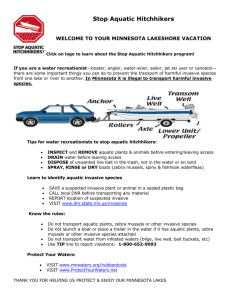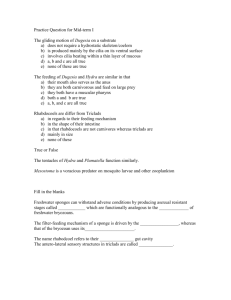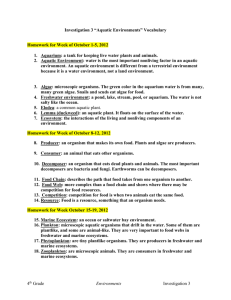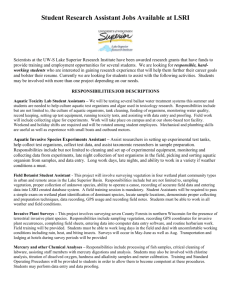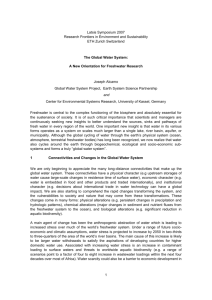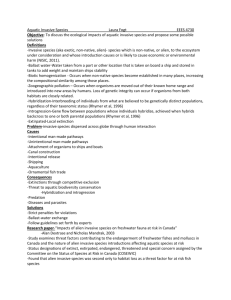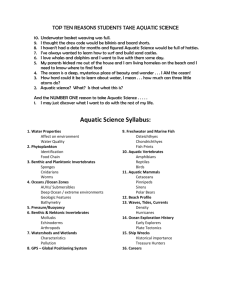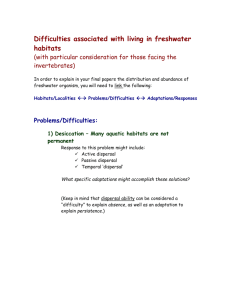Animals and Plants of the Finger Lakes
advertisement
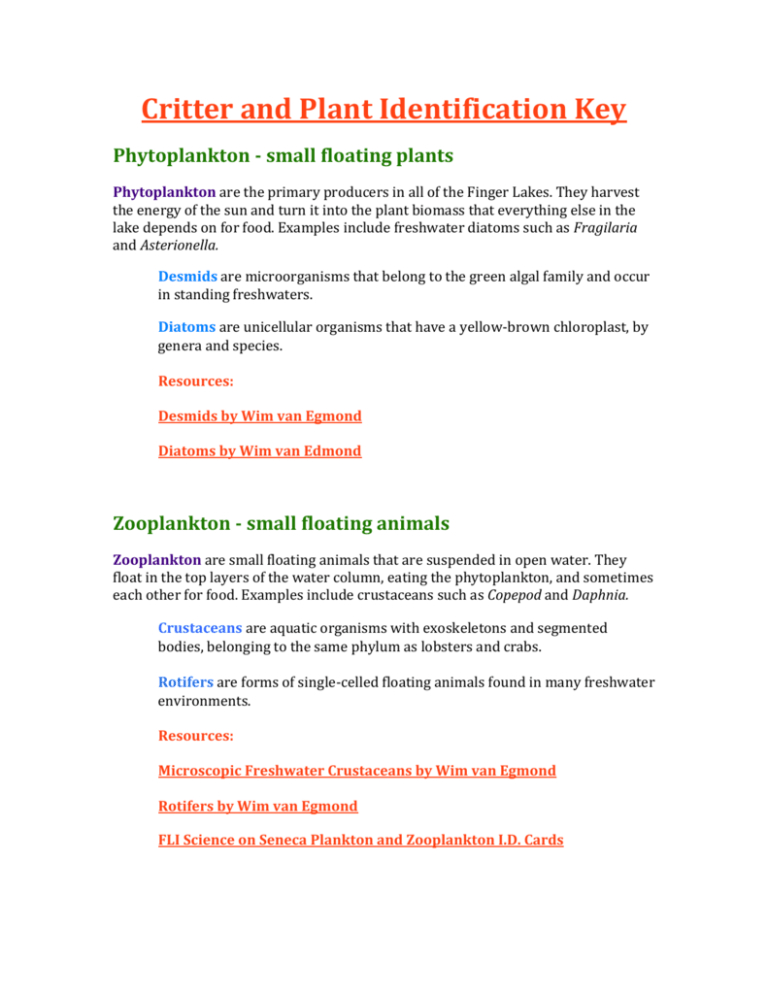
Critter and Plant Identification Key Phytoplankton - small floating plants Phytoplankton are the primary producers in all of the Finger Lakes. They harvest the energy of the sun and turn it into the plant biomass that everything else in the lake depends on for food. Examples include freshwater diatoms such as Fragilaria and Asterionella. Desmids are microorganisms that belong to the green algal family and occur in standing freshwaters. Diatoms are unicellular organisms that have a yellow-brown chloroplast, by genera and species. Resources: Desmids by Wim van Egmond Diatoms by Wim van Edmond Zooplankton - small floating animals Zooplankton are small floating animals that are suspended in open water. They float in the top layers of the water column, eating the phytoplankton, and sometimes each other for food. Examples include crustaceans such as Copepod and Daphnia. Crustaceans are aquatic organisms with exoskeletons and segmented bodies, belonging to the same phylum as lobsters and crabs. Rotifers are forms of single-celled floating animals found in many freshwater environments. Resources: Microscopic Freshwater Crustaceans by Wim van Egmond Rotifers by Wim van Egmond FLI Science on Seneca Plankton and Zooplankton I.D. Cards New York Fish Species There are more than 165 species of freshwater fish in New York State, providing it with one of the richest fish fauna in the nation. Common species of the Finger Lakes include Atlantic salmon (Salmo salar) and Lake trout (Salvelinus namaycush). Resources: DEC Freshwater Fishes Cornell University Inland Fishes of New York Invasive Species Invasive bivalve species cause extensive damage to aquatic environments by depleting food sources and outcompeting native species. Learn more about what they look like and why they are a problem in most of the Finger Lakes, including Seneca Lake. Resources: Zebra Mussel Impact on Seneca Lake by Prof. John Halfman USGS Zebra and Quagga Mussels Information Page Asian Clam Scientific Literature Review by PhD. Holly Menninger Aquatic Plants Aquatic plants, both native and invasive, have a significant impact on the habitat, temperature regulation, oxygen levels, and overall water quality of aquatic ecosystems. Check out the links below to find out how to identify native and invasive aquatic plants in the Finger Lakes. Resources: DEC Common Aquatic Invasive Species of NY Aquatic Plants: The Good and the Bad

